Related Research Articles

Epidemiology is the study and analysis of the distribution,patterns and determinants of health and disease conditions in a defined population.

A veterinarian (vet) is a medical professional who practices veterinary medicine. They manage a wide range of health conditions and injuries in non-human animals. Along with this,veterinarians also play a role in animal reproduction,health management,conservation,husbandry and breeding and preventive medicine like nutrition,vaccination and parasitic control as well as biosecurity and zoonotic disease surveillance and prevention.
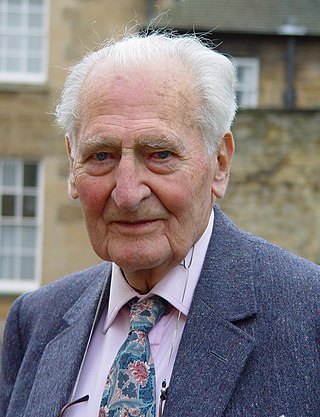
Sir William Richard Shaboe Doll was a British physician who became an epidemiologist in the mid-20th century and made important contributions to that discipline. He was a pioneer in research linking smoking to health problems. With Ernst Wynder,Bradford Hill and Evarts Graham,he was credited with being the first to prove that smoking increased the risk of lung cancer and heart disease.
Arthur Michael Kleinman is an American psychiatrist,social anthropologist and a professor of medical anthropology,psychiatry and global health and social medicine at Harvard University.
Bioarchaeology in Europe describes the study of biological remains from archaeological sites. In the United States it is the scientific study of human remains from archaeological sites.

Paleopathology,also spelled palaeopathology,is the study of ancient diseases and injuries in organisms through the examination of fossils,mummified tissue,skeletal remains,and analysis of coprolites. Specific sources in the study of ancient human diseases may include early documents,illustrations from early books,painting and sculpture from the past. All these objects provide information on the evolution of diseases as well as how past civilizations treated conditions. Studies have historically focused on humans,although there is no evidence that humans are more prone to pathologies than any other animal.
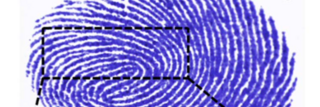
Jane Ellen Buikstra is an American anthropologist and bioarchaeologist. Her 1977 article on the biological dimensions of archaeology coined and defined the field of bioarchaeology in the US as the application of biological anthropological methods to the study of archaeological problems. Throughout her career,she has authored over 20 books and 150 articles. Buikstra's current research focuses on an analysis of the Phaleron cemetery near Athens,Greece.
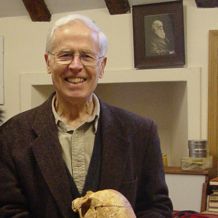
Donald Reginald Brothwell,was a British archaeologist,anthropologist and academic,who specialised in human palaeoecology and environmental archaeology. He had worked at the University of Cambridge,the British Museum,and the Institute of Archaeology of University of London,before ending his career as Professor of Human Palaeoecology at the University of York. He has been described as "one of the pioneers in the field of archaeological science".

Social medicine is an interdisciplinary field that focuses on the profound interplay between socio-economic factors and individual health outcomes. Rooted in the challenges of the Industrial Revolution,it seeks to:
- Understand how specific social,economic,and environmental conditions directly impact health,disease,and the delivery of medical care.
- Promote conditions and interventions that address these determinants,aiming for a healthier and more equitable society.
Environmental epidemiology is a branch of epidemiology concerned with determining how environmental exposures impact human health. This field seeks to understand how various external risk factors may predispose to or protect against disease,illness,injury,developmental abnormalities,or death. These factors may be naturally occurring or may be introduced into environments where people live,work,and play.

Chimney sweeps' cancer,also called soot wart or scrotal cancer,is a squamous cell carcinoma of the scrotum. It has the distinction of being the first reported form of occupational cancer,and was initially identified by Percivall Pott in 1775. It was initially noticed as being prevalent amongst chimney sweeps. The disease has also been seen in men exposed to mineral oil and those who worked with coal distillates.
While epidemiology is "the study of the distribution and determinants of states of health in populations",social epidemiology is "that branch of epidemiology concerned with the way that social structures,institutions,and relationships influence health." This research includes "both specific features of,and pathways by which,societal conditions affect health".
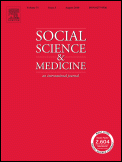
Social Science &Medicine is a peer-reviewed academic journal covering social science research on health,including anthropology,economics,geography,psychology,social epidemiology,social policy,sociology,medicine and health care practice,policy,and organization. It was established in 1967 and is published by Elsevier.
George J. Armelagos was an American anthropologist,and Goodrich C. White Professor of Anthropology at Emory University in Atlanta,Georgia. Armelagos significantly impacted the field of physical anthropology and biological anthropology. His work has provided invaluable contributions to the theoretical and methodological understanding human disease,diet and human variation within an evolutionary context. Relevant topics include epidemiology,paleopathology,paleodemography,bioarchaeology,evolutionary medicine,and the social interpretations of race,among others.
Charlotte Ann Roberts,FBA is a British archaeologist,academic and former nurse. She is a bioarchaeologist and palaeopathologist,whose research focuses on health and the evolution of infectious disease in humans. From 2004 to 2020,she was Professor of Archaeology at Durham University:she is now professor emeritus.

Dr. Philip E. Sartwell (1908–1999) was a noted epidemiologist and professor at the Johns Hopkins School of Hygiene and Public Health.

Medieval Bioarchaeology is the study of human remains recovered from medieval archaeological sites. Bioarchaeology aims to understand populations through the analysis of human skeletal remains and this application of bioarchaeology specifically aims to understand medieval populations. There is an interest in the Medieval Period when it comes to bioarchaeology,because of how differently people lived back then as opposed to now,in regards to not only their everyday life,but during times of war and famine as well. The biology and behavior of those that lived in the Medieval Period can be analyzed by understanding their health and lifestyle choices.
Rebecca Gowland is a bioarchaeologist. She is a Professor of Archaeology at Durham University.
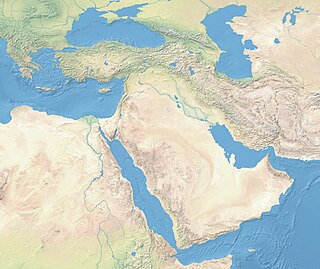
Near Eastern bioarchaeology covers the study of human skeletal remains from archaeological sites in Cyprus,Egypt,Levantine coast,Jordan,Turkey,Iran,Saudi Arabia,Qatar,Kuwait,Bahrain,United Arab Emirates,Oman,and Yemen.
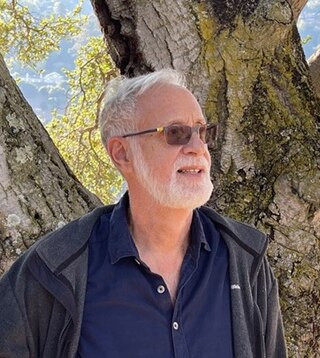
Mark Richard Cullen is a physician,scholar,and population health scientist known for his work in occupational medicine. As a professor at Yale and later Stanford University,his research focused on the social,environmental,behavioral and bio-medical determinants of morbidity and mortality in adults,with special emphasis on the role of workplace’in such matters.
References
- 1 2 3 4 5 6 7 8 9 10 Dullaghan, Jo (21 January 2021). "Tony Waldron". Institute of Archaeology. University College London . Retrieved 4 February 2021.
- 1 2 3 Cole, Garrard; Kingham, Emilia; Waldron, Tony (2019). "Printing pathology: a case study in presenting pathological human skeletal remains for education and display". Journal of the Institute of Conservation. 42 (1): 18–33. doi: 10.1080/19455224.2018.1550431 . ISSN 1945-5224.
- ↑ Waldron, Tony (4 July 2001). "Readers' letters". The Guardian .
- ↑ Waldron, Tony (17 April 2009). "The real NHS experts". The Times . ISSN 0140-0460.
- ↑ Manchester, Keith (1995). "Tony Waldron, Counting the dead: the epidemiology of skeletal populations, Chichester, John Wiley & Sons, 1994, pp. xiv, 109, £12.95 (paperback 0-471-95138-2)". Medical History. 39 (4): 507. doi: 10.1017/S0025727300060476 . ISSN 2048-8343.
- ↑ Konigsberg, Lyle W. (1996). "Review of Counting the Dead: The Epidemiology of Skeletal Populations". Human Biology. 68 (3): 479–481. ISSN 0018-7143. JSTOR 41465491.
- ↑ Antón, Susan C.; Warren, Michael W. (1996). "Book Review: A field guide to joint disease in archaeology. By Juliet Rogers and Tony Waldron". American Journal of Human Biology. 8 (3): 409–410. doi:10.1002/ajhb.1310080303. ISSN 1520-6300.
- ↑ Bridges, Patricia S. (1996). "Book review: A Field Guide to Joint Disease in Archaeology". American Antiquity. 61 (3): 630. doi:10.2307/281866. ISSN 0002-7316. JSTOR 281866. S2CID 164723919.
- ↑ Revell, Peter (1 February 1996). "Book review: A field guide to joint disease in archaeology". Annals of the Rheumatic Diseases. 55 (2): 88. doi: 10.1136/ard.55.2.88 . ISSN 0003-4967. PMC 1010099 .
- ↑ Hickok, Andrew W. (2009). "Review of Paleoepidemiology: The Measure of Disease in the Human Past". Canadian Journal of Archaeology. 33 (1): 140–142. ISSN 0705-2006. JSTOR 41103650.
- ↑ Gowland, Rebecca (2010). "Tony Waldron, Palaeoepidemiology: the measure of disease in the human past, Walnut Creek, CA, Left Coast Press, 2007, pp. 148, £27.99 (hardback 978-1-59874-252-7)". Medical History. 54 (3): 407–408. doi:10.1017/S0025727300004750. ISSN 2048-8343. S2CID 227103046.
- ↑ Rennie, Claire Marie (2010). "Book review: Palaeoepidemiology. The Measure of Disease in the Human Past" (PDF). PaleoAnthropology. 2010: 226–227. doi: 10.4207/pa.2010.rev97 . ISSN 1545-0031.
- ↑ DeWitte, Sharon N. (2011). "Palaeoepidemiology: The Measure of Disease in the Human Past by Tony Waldron". Medical Anthropology Quarterly. 25 (1): 127–128. doi:10.1111/j.1548-1387.2010.01142.x. ISSN 1548-1387.
- ↑ Lewis, Mary (2010). "Book Review of Palaeopathology, by Tony Waldron". American Journal of Archaeology. 114 (2). doi: 10.3764/ajaonline1142.Lewis .
- ↑ Armelagos, George (2010). "New biological books: Palaeopathology. Cambridge Manuals in Archaeology. By Tony Waldron". The Quarterly Review of Biology. 85 (2): 215. doi:10.1086/652322. ISSN 0033-5770. S2CID 225069322.
- ↑ Miller, Elizabeth (2010). "Book review: Palaeopathology. By Tony Waldron". American Journal of Physical Anthropology. 142 (4): 674–675. doi:10.1002/ajpa.21295. ISSN 1096-8644.
- ↑ Timm, Mary Beth (2010). "Book review: Palaeopathology" (PDF). PaleoAnthropology. 2010: 218–220. doi: 10.4207/pa.2010.rev94 . ISSN 1545-0031.
- ↑ Waldron, Tony (2015). "Roy Lee Moodie (1880–1934) and the beginnings of palaeopathology". Journal of Medical Biography. 23 (1): 8–13. doi:10.1177/0967772013479544. ISSN 0967-7720. PMC 4509874 . PMID 24585585.
- ↑ Waldron, Tony (2013). "Crooked Timber: The life of Calvin Wells (1908–1978)". Journal of Medical Biography. 22 (2): 82–89. doi:10.1177/0967772013479734. PMC 4107771 . PMID 24585588.